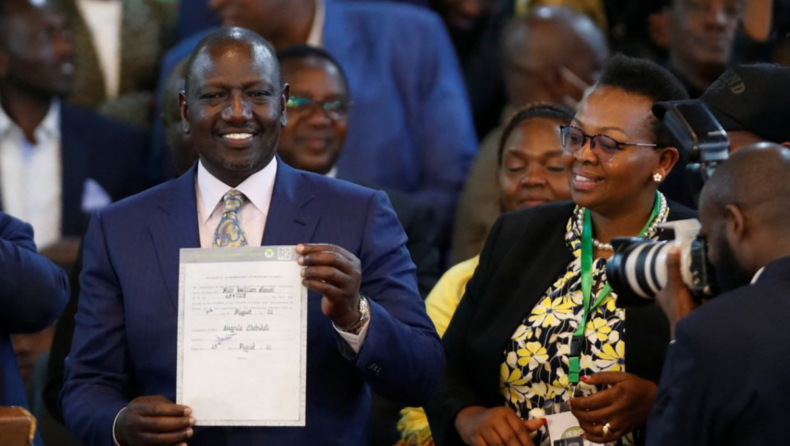On Monday, Kenya’s elections head pronounced Deputy President William Ruto the victor of a close presidential contest, but several senior election officials disavowed the outcome, fueling concerns of violence similar to those witnessed following past disputed results.
Praising the election commission as “heroes” ,”There is no looking back,” Ruto added. We are anticipating the future. To move forward, we need all hands on deck.”
The 55-year-old had made Kenya’s class disparities the focal point of his campaign to become the country’s fifth president, vowing to reward low-income “hustlers” while mocking Kenya’s political dynasties.
That was a thinly disguised dig at his opponent Raila Odinga and President Uhuru Kenyatta, the sons of the country’s first vice president and president, respectively.
As Kenyans awaited the final results of the election held over a week ago, Ruto, who heads the Kenya Kwanza (Kenya First) Alliance, looked to be leading long-time opposition leader Odinga.
Minutes before the electoral commission’s head, Wafula Chebukati, proclaimed that Ruto had won the vote, his deputy, Juliana Cherera, told the media at a different location that she and three other commissioners rejected the results.
“We are not able to take ownership of the results that will be announced, because of the opaque nature of this last phase of the general election,” she said.
The electoral commission consists of seven members.
As scuffles erupted, diplomats and foreign observers were escorted out of the tallying hall before Chebukati spoke.
Before proclaiming Ruto as the winner, Chebukati stated that two commissioners and the Chief Executive of the Electoral Commission had been hurt and were being treated.
Chebukati said that Ruto received 50.49% of the vote, compared to Odinga’s 48.5%.
The victorious candidate must get 50% of the votes cast plus one.
Odinga was not present for the announcement.
Cherera urged the parties to resolve any disagreements through the courts, citing concerns that vote-rigging charges might lead to bloodshed similar to that seen after presidential elections in 2007 and 2017.
The electoral commission has implemented several checks and balances in an attempt to avert conflicts like the ones that resulted in unrest in which over 1,200 people were killed during the 2007 election. More than 100 people were slain in 2017 after the Supreme Court overturned the first result due to anomalies in the voting process.













